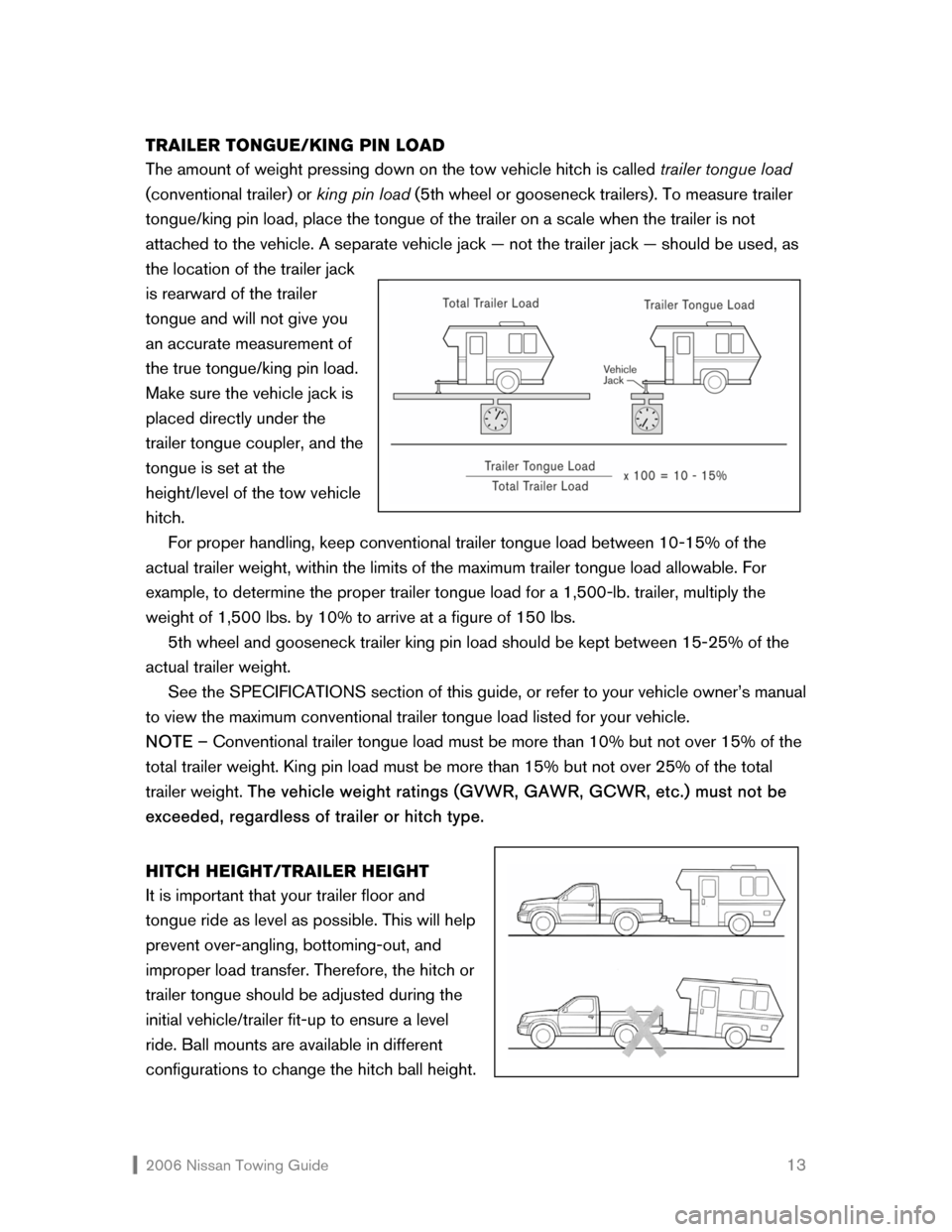2006 Nissan Towing Guide 13 TRAILER TONGUE/KING PIN LOAD
The amount of weight pressing down on the tow vehicle hitch is called trailer tongue load
(conventional trailer) or king pin load (5th wheel or gooseneck trailers). To measure trailer
tongue/king pin load, place the tongue of the trailer on a scale when the trailer is not
attached to the vehicle. A separate vehicle jack — not the trailer jack — should be used, as
the location of the trailer jack
is rearward of the trailer
tongue and will not give you
an accurate measurement of
the true tongue/king pin load.
Make sure the vehicle jack is
placed directly under the
trailer tongue coupler, and the
tongue is set at the
height/level of the tow vehicle
hitch.
For proper handling, keep conventional trailer tongue load between 10-15% of the
actual trailer weight, within the limits of the maximum trailer tongue load allowable. For
example, to determine the proper trailer tongue load for a 1,500-lb. trailer, multiply the
weight of 1,500 lbs. by 10% to arrive at a figure of 150 lbs.
5th wheel and gooseneck trailer king pin load should be kept between 15-25% of the
actual trailer weight.
See the SPECIFICATIONS section of this guide, or refer to your vehicle owner’s manual
to view the maximum conventional trailer tongue load listed for your vehicle.
NOTE – Conventional trailer tongue load must be more than 10% but not over 15% of the
total trailer weight. King pin load must be more than 15% but not over 25% of the total
trailer weight. The vehicle weight ratings (GVWR, GAWR, GCWR, etc.) must not be
exceeded, regardless of trailer or hitch type.
HITCH HEIGHT/TRAILER HEIGHT
It is important that your trailer floor and
tongue ride as level as possible. This will help
prevent over-angling, bottoming-out, and
improper load transfer. Therefore, the hitch or
trailer tongue should be adjusted during the
initial vehicle/trailer fit-up to ensure a level
ride. Ball mounts are available in different
configurations to change the hitch ball height.
